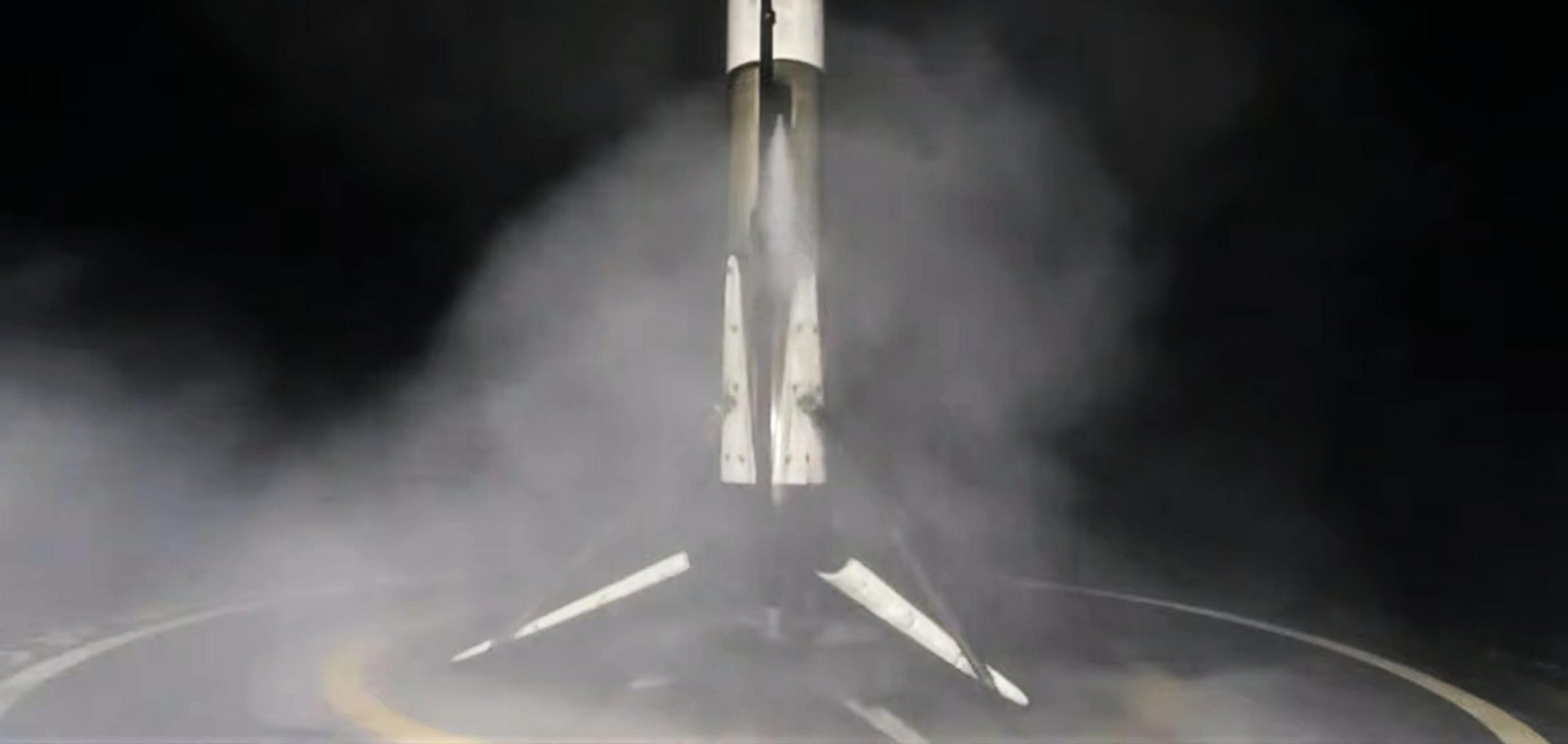
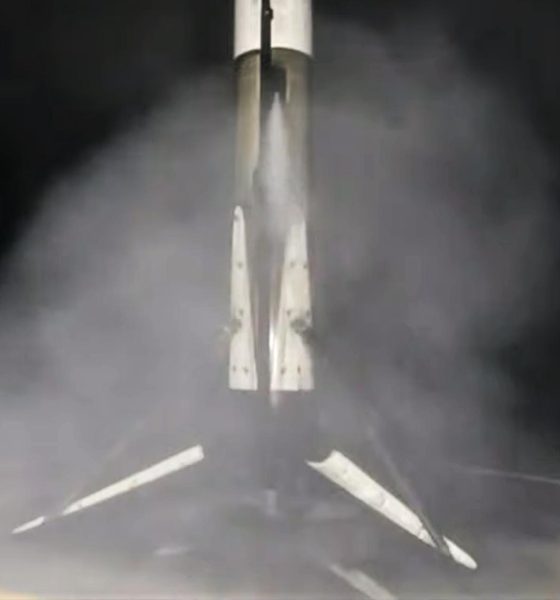
News
SpaceX sets Dragon reuse record, debuts drone ship on first launch in two months
Update #2: After a 24-hour weather delay, conditions were far more favorable on August 29th, allowing a SpaceX Falcon 9 rocket to lift off for the first time in almost two months and send a cargo-filled Dragon spacecraft on its way to the International Space Station (ISS).
Aside from marking the end of SpaceX’s longest launch hiatus in two years, CRS-23’s successful liftoff also means that the company has smashed the world record for fastest orbital space capsule reuse. As part of Cargo Dragon 2’s first reuse ever, SpaceX launched Dragon C208 just seven and a half months (227d) after its first orbital reentry and splashdown, handily beating the previous record of 328 days. Additionally, flying for the fourth time, Falcon 9 booster B1064 became the first rocket to land on brand new SpaceX drone ship A Shortfall of Gravitas (ASOG) after sending Dragon C208 on its way to the ISS.
Getting a nice view of CRS-23's trunk as it separates, confirming no trunk cargo on this flight. pic.twitter.com/ZeJjviKqFE— Jonathan McDowell (@planet4589) August 29, 2021
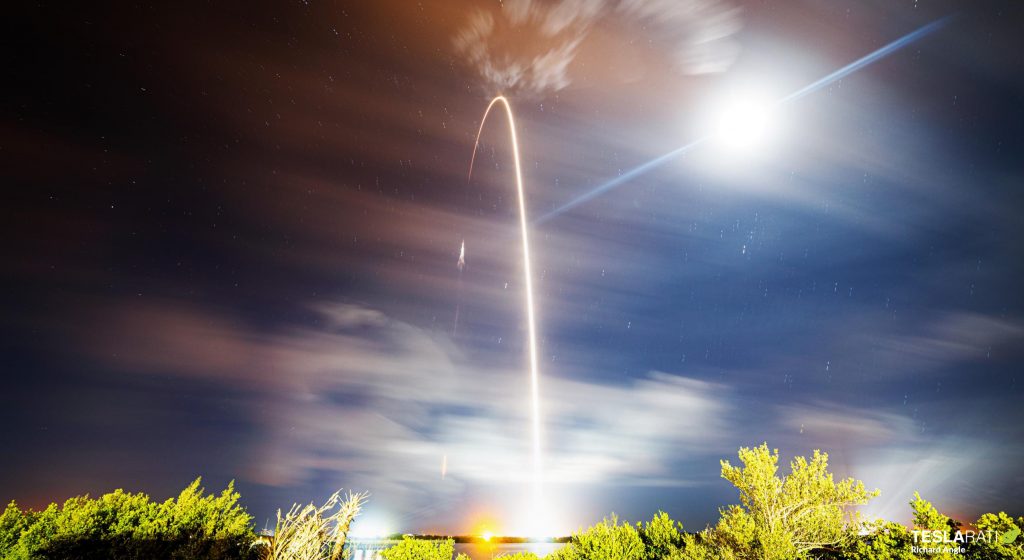
Update: Although the weather forecast has worsened, SpaceX remains on track to attempt its first launch in eight weeks – a mission that will also smash one of the company’s orbital spacecraft reusability records.
While mostly mundane, a system preceding Tropical Storm Ida is producing conditions less than optimal for rocket launches, raising the risk of in-flight lightning strikes and the chances of Falcon 9 and Dragon flying through clouds containing precipitation (rain/ice/etc). Ultimately, that means that there’s just a 40% chance (down from 50% in the last few days) that weather conditions will be favorable for SpaceX to launch CRS-23. Regardless, barring a surprise announcement in the next few hours, it appears that there’s enough of a chance that SpaceX and NASA will still make an attempt.
If all goes according to plan, a flight-proven Falcon 9 rocket will send an upgraded Cargo Dragon on the way to orbit for the second time in seven months – almost twice as fast a turnaround as SpaceX’s ~340-day record for orbital spacecraft reuse. Tune in below around 3:20am EDT (07:20 UTC) to catch the hopeful launch live.
For the first time in more than nine weeks, SpaceX has completed a routine Falcon 9 preflight test known as a static fire and verified that the rocket is ready to launch later this week.
Save for at least one booster qualification test completed at SpaceX’s McGregor, Texas development facilities, Falcon 9’s August 25th static fire is the first since June 22nd. The upgraded Cargo Dragon space station resupply mission the rocket will support will also be SpaceX’s first launch since June 30th – the company’s longest hiatus between launches since a three-month pause that began two years ago.
Now, just a few days before that drought is expected to end, a SpaceX executive has partially explained why the company hasn’t launched a single Falcon rocket in ~60 days after completing a record 20 orbital launches in the first half of 2021.
Speaking at the 2021 Space Symposium on August 24th, SpaceX President and COO Gwynne Shotwell revealed that the company had chosen to pause Starlink missions (representing the vast majority of its 2021 launches) and focus on preparing a new generation of satellites for flight. Believed to be called Starlink V1.5, those new satellites represent a relatively small design change save for one crucial addition: multiple lasers.
All the way back in mid-2018, SpaceX launched its very first pair of Starlink prototype satellites – spacecraft that largely functioned as expected and provided a wealth of data but were almost nothing like the Starlink V0.9 and V1.0 spacecraft SpaceX would eventually start launching in 2019. Nevertheless, they did carry sets of small lasers generally known as optical intersatellite links or OISLs for short. Not radically dissimilar to the hundreds of thousands of miles of fiber optic cables that make up the backbone of the internet, lasers operating in the vacuum of space can effectively mirror the extraordinary bandwidth and performance offered by fiber connections – but wirelessly.
Instead of carefully insulated cables filled with tiny threads of glass, which really just serve as a controlled environment for light-based communications, OISLs enable a similar feat by replacing cables with extraordinarily precise mechanisms capable of aiming lasers with sub-millimeter precision from dozens or hundreds of miles away. As a result, laser interlinks are fairly complex and expensive devices – not something currently economical to install on thousands of satellites mainly focused on affordability.
SpaceX, of course, has wanted to install unprecedentedly affordable laser interlinks on thousands of Starlink satellites for as long as the constellation has been publicly discussed. If realized, it would create an extraordinary orbital mesh network that would allow Starlink to self-route a large portion of user communications without the need for a colossal network of tens of thousands of ground stations covering every inch of Earth – land, sea, ice, and all. A Starlink constellation with near-universal laser interlinks could also potentially allow the constellation to not only match – but beat by a large margin – the latency of best-case terrestrial fiber-optic connections.
After effectively completing Starlink’s first ‘shell’ of satellites earlier this year, SpaceX shifted its focus to preparing for polar Starlink launches from both its west and east coast facilities. While the first shell lacked interlinks entirely, SpaceX appears to have decided that all polar Starlink satellites will be launched with its own custom-built space lasers, even if that means delaying Starlink launches until those lasers are ready for action. Due to the fact that the vast majority of SpaceX’s launches as of late have been its own Starlink missions, the company’s Falcon rockets simply haven’t had anything to launch.
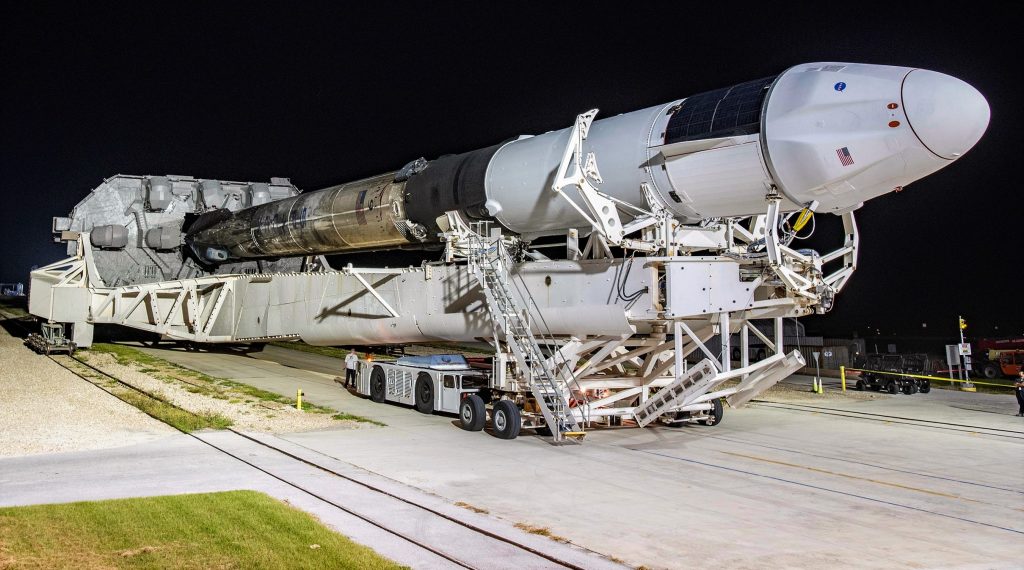
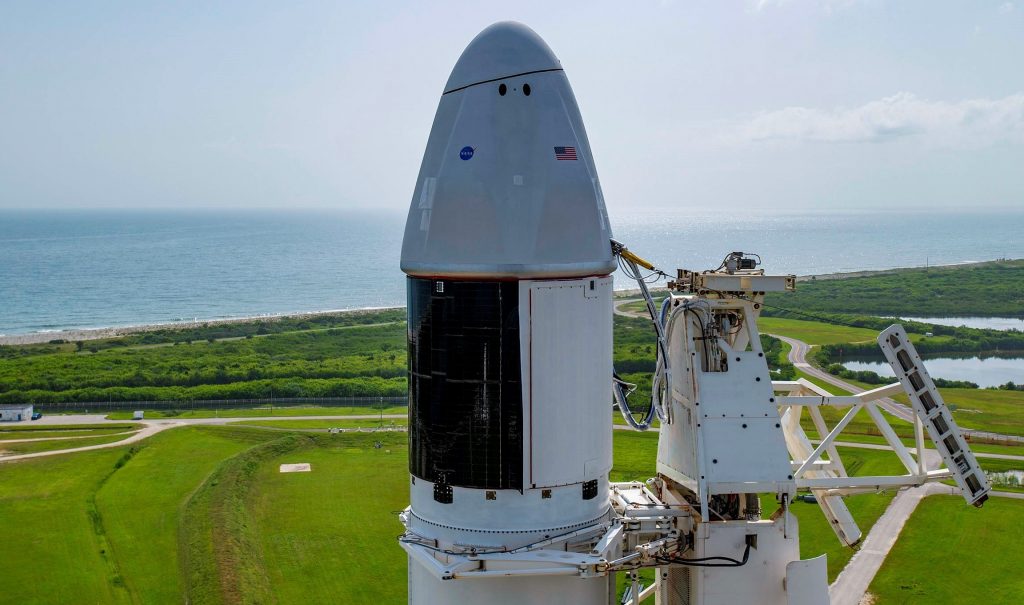
That should change on August 28th, when a thrice-flown Falcon 9 booster launches a refurbished spacecraft on its second orbital space station resupply – a first for SpaceX’s upgraded Cargo Dragon 2 vehicle. A Shortfall of Gravitas (ASOG), SpaceX’s newest drone ship, will also be supporting its first Falcon landing ever as part of CRS-23, hopefully recovering Falcon 9 booster B1064 for a fifth launch later this year.
Tune in around 3:20am (07:20 UTC) on Saturday, August 28th to watch SpaceX’s first launch in two months live.

News
Tesla FSD fleet is nearing 7 billion total miles, including 2.5 billion city miles
As can be seen on Tesla’s official FSD webpage, vehicles equipped with the system have now navigated over 6.99 billion miles.

Tesla’s Full Self-Driving (Supervised) fleet is closing in on almost 7 billion total miles driven, as per data posted by the company on its official FSD webpage.
These figures hint at the massive scale of data fueling Tesla’s rapid FSD improvements, which have been quite notable as of late.
FSD mileage milestones
As can be seen on Tesla’s official FSD webpage, vehicles equipped with the system have now navigated over 6.99 billion miles. Tesla owner and avid FSD tester Whole Mars Catalog also shared a screenshot indicating that from the nearly 7 billion miles traveled by the FSD fleet, more than 2.5 billion miles were driven inside cities.
City miles are particularly valuable for complex urban scenarios like unprotected turns, pedestrian interactions, and traffic lights. This is also the difference-maker for FSD, as only complex solutions, such as Waymo’s self-driving taxis, operate similarly on inner-city streets. And even then, incidents such as the San Francisco blackouts have proven challenging for sensor-rich vehicles like Waymos.
Tesla’s data edge
Tesla has a number of advantages in the autonomous vehicle sector, one of which is the size of its fleet and the number of vehicles training FSD on real-world roads. Tesla’s nearly 7 billion FSD miles then allow the company to roll out updates that make its vehicles behave like they are being driven by experienced drivers, even if they are operating on their own.
So notable are Tesla’s improvements to FSD that NVIDIA Director of Robotics Jim Fan, after experiencing FSD v14, noted that the system is the first AI that passes what he described as a “Physical Turing Test.”
“Despite knowing exactly how robot learning works, I still find it magical watching the steering wheel turn by itself. First it feels surreal, next it becomes routine. Then, like the smartphone, taking it away actively hurts. This is how humanity gets rewired and glued to god-like technologies,” Fan wrote in a post on X.
News
Tesla starts showing how FSD will change lives in Europe
Local officials tested the system on narrow country roads and were impressed by FSD’s smooth, human-like driving, with some calling the service a game-changer for everyday life in areas that are far from urban centers.

Tesla has launched Europe’s first public shuttle service using Full Self-Driving (Supervised) in the rural Eifelkreis Bitburg-Prüm region of Germany, demonstrating how the technology can restore independence and mobility for people who struggle with limited transport options.
Local officials tested the system on narrow country roads and were impressed by FSD’s smooth, human-like driving, with some calling the service a game-changer for everyday life in areas that are far from urban centers.
Officials see real impact on rural residents
Arzfeld Mayor Johannes Kuhl and District Administrator Andreas Kruppert personally tested the Tesla shuttle service. This allowed them to see just how well FSD navigated winding lanes and rural roads confidently. Kruppert said, “Autonomous driving sounds like science fiction to many, but we simply see here that it works totally well in rural regions too.” Kuhl, for his part, also noted that FSD “feels like a very experienced driver.”
The pilot complements the area’s “Citizen Bus” program, which provides on-demand rides for elderly residents who can no longer drive themselves. Tesla Europe shared a video of a demonstration of the service, highlighting how FSD gives people their freedom back, even in places where public transport is not as prevalent.
What the Ministry for Economic Affairs and Transport says
Rhineland-Palatinate’s Minister Daniela Schmitt supported the project, praising the collaboration that made this “first of its kind in Europe” possible. As per the ministry, the rural rollout for the service shows FSD’s potential beyond major cities, and it delivers tangible benefits like grocery runs, doctor visits, and social connections for isolated residents.
“Reliable and flexible mobility is especially vital in rural areas. With the launch of a shuttle service using self-driving vehicles (FSD supervised) by Tesla in the Eifelkreis Bitburg-Prüm, an innovative pilot project is now getting underway that complements local community bus services. It is the first project of its kind in Europe.
“The result is a real gain for rural mobility: greater accessibility, more flexibility and tangible benefits for everyday life. A strong signal for innovation, cooperation and future-oriented mobility beyond urban centers,” the ministry wrote in a LinkedIn post.
News
Tesla China quietly posts Robotaxi-related job listing
Tesla China is currently seeking a Low Voltage Electrical Engineer to work on circuit board design for the company’s autonomous vehicles.

Tesla has posted a new job listing in Shanghai explicitly tied to its Robotaxi program, fueling speculation that the company is preparing to launch its dedicated autonomous ride-hailing service in China.
As noted in the listing, Tesla China is currently seeking a Low Voltage Electrical Engineer to work on circuit board design for the company’s autonomous vehicles.
Robotaxi-specific role
The listing, which was shared on social media platform X by industry watcher @tslaming, suggested that Tesla China is looking to fill the role urgently. The job listing itself specifically mentions that the person hired for the role will be working on the Low Voltage Hardware team, which would design the circuit boards that would serve as the nervous system of the Robotaxi.
Key tasks for the role, as indicated in the job listing, include collaboration with PCB layout, firmware, mechanical, program management, and validation teams, among other responsibilities. The role is based in Shanghai.
China Robotaxi launch
China represents a massive potential market for robotaxis, with its dense urban centers and supportive policies in select cities. Tesla has limited permission to roll out FSD in the country, though despite this, its vehicles have been hailed as among the best in the market when it comes to autonomous features. So far, at least, it appears that China supports Tesla’s FSD and Robotaxi rollout.
This was hinted at in November, when Tesla brought the Cybercab to the 8th China International Import Expo (CIIE) in Shanghai, marking the first time that the autonomous two-seater was brought to the Asia-Pacific region. The vehicle, despite not having a release date in China, received a significant amount of interest among the event’s attendees.








